Beloit College
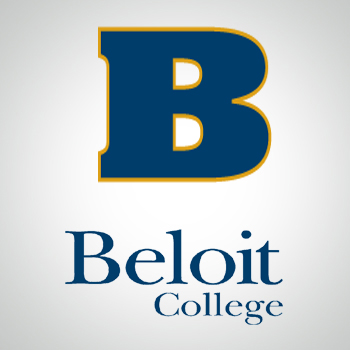
Founded: 1846
Address: 700 College St, Beloit, WI - Wisconsin, United States
Phone: +1 608 3632500
Address: 700 College St, Beloit, WI - Wisconsin, United States
Phone: +1 608 3632500
Here you find out Beloit College complete information about fees, location, degree Beloit College offers, number, website, and much more. Beloit College is a leading university in Wisconsin - United States.
You can also find out jobs at Beloit College for students, teachers, and professors. We also update the database for an internship at Beloit College for students.
Beloit College engages the intelligence, imagination, and curiosity of its students, empowering them to lead fulfilling lives marked by high achievement, personal responsibility, and public contribution in a diverse society. Our emphasis on international and interdisciplinary perspectives, the integration of knowledge with experience, and close collaboration among peers, professors, and staff e...quips our students to approach the complex problems of the world ethically and thoughtfully.
Beloit College faculty are scholar-teachers who act as mentors to their students, include them in their lessons and research, and support their development within the classroom and outside it. Beloit professors guide, engage, interact, and ask tough questions, all while continuing to explore their own work as scholars, bringing students along for research opportunities and summertime projects. Of the roughly 105 full-time faculty at Beloit, 97 percent hold a Ph.D. or the highest degree in their field.
Beloit College was founded in 1846, when Wisconsin was still a territory. The early curriculum was built on the classical tradition, but students were given an unusual amount of freedom to choose their own courses. Today, Beloit is recognized for its longstanding commitment to curricular innovation, and its first-year initiatives and international education programs.
The Beloit College community is diverse and noted for its passionate engagement with ideas and the world. Its 1,300 students are from nearly every state, the District of Columbia, and 44 nations. Forty percent of its students are domestic minorities or students from countries other than the United States.
95% of Beloit"s 104 full-time faculty members hold a Ph.D. or the highest degree in their field. Teaching is the faculty"s highest priority but all professors are active scholars and artists. Many are leaders in educational reform.Professors serve as mentors, guides, and partners on research projects and academic work. A strong tradition of student-teacher collaboration contributes to the college"s lively intellectual community.
Beloit offers more than fifty majors, more than thirty minors, and a number of dual-degree and preprofessional programs. Coursework is rigorous, interdisciplinary, experiential, and global in scope. The average class size is 15 students; Beloit has a 12:1 student-to-faculty ratio. All Beloiters complete a "Liberal Arts in Practice" (LAP) requirement before they graduate, in which they apply their knowledge outside of the classroom through hands-on experiences like internships, research-related fieldwork, or community engagement projects.
Beloit"s wooded forty-acre campus includes twenty-eight buildings in a range of architectural styles; four buildings are listed on the National or State Register of Historic Places. The campus is marked by winding pathways, expansive lawns, displays of public art, and ancient Indian mounds.
The college"s academic facilities include the internationally recognized Logan Museum of Anthropology, the Wright Museum of Art, the Hendricks Center for the Arts, and the Marjorie and James Sanger Center for the Sciences, a LEED-Certified building equipped with high-tech research labs. Beloit offers more than thirty international programs and dozens of domestic study programs.
The College"s early curriculum was cast mainly in the Yale mold. Aratus Kent, chairman of the Beloit College board of trustees, and the first faculty members, Jackson J. Bushnell and Joseph Emerson, built a solid casing with Yale mortar before another Yale graduate, Aaron Lucius Chapin, accepted Beloit"s first presidency in December 1849. He served until 1886, and during his presidency the College became widely known for its scholastic excellence.
From its beginning, the College showed both a solid classical tradition and a penchant for innovation and experimentation in curriculum. The administration of Edward Dwight Eaton, Beloit"s second president, witnessed the addition of a philosophical course to the classical groundwork, including new emphasis on the sciences. A course in evolution was offered as early as the 1890s, whereupon students were given greater latitude in the selection of their courses. Beloit enrolled its first women students in 1895.
New courses and other innovations, including home economics and journalism, flourished under Melvin Brannon"s administration after World War I. The Brannon era saw substantial growth in the endowment assets of the College and a refurbishing of the physical plant.
Irving Maurer returned to his alma mater as president in 1924 and served until his death in 1942. The period of 1927 to 1933 was, like the 1890s, a remarkable building era. President Maurer"s administration also put renewed emphasis on the liberal arts and spiritual values, and continued resistance to the post-war demand for the "practical."
After a period of more than two years, when World War II sharply reduced enrollment and presented many other problems, Carey Croneis became president in 1944. The nine-year administration of Beloit"s fifth president saw an influx of war veterans swell enrollment to more than 1,000, and additional buildings and other campus improvements were completed.As Beloit celebrated its centennial, President Croneis noted that the College had grown to a "lusty educational manhood surpassing anything that President Chapin envisaged."
The administration of Miller Upton, who served for 21 years, was marked by a long period of intensive self-study. This led to a series of far-reaching curricular changes, including enrollment growth to the highest level in Beloit"s history and the extensive development of the physical plant. This building period included a new library, science center, performing arts center, anthropology building, and seven new residential buildings. The College"s "World Outlook" program was inaugurated in 1960 and continues today. The innovative "Beloit Plan" of year-round education, introduced in 1964, brought increased national recognition to the College, and many elements of that distinctive curricular program also continue today.
Beloit"s seventh president, Martha Peterson, was inaugurated in the fall of 1975 and served until her retirement in 1981, when she was named president emerita. She had come to Beloit after serving as president of Barnard College for eight years and as former chairman of the American Council on Education. In her inaugural address she asked "all who love and respect this historic College to help us hold high the banners of our traditions, our liberal arts commitment and our daring to be different."
During the late 1970s, the College responded effectively to problems of smaller enrollments, an altered pattern of student interests and the demands of an inflationary economy. A traditional two-semester academic year was restored, extra-curricular life enhanced, improvements to the campus completed and the endowment resources expanded. A long-range plan for the 1980s also was developed.
Roger Hull was elected as Beloit"s eighth president in 1981. During his administration, enrollment increased each year and the endowment reached its highest level in history. Annual fund raising and alumni support also reached record highs. At the same time, significant new academic and career counseling programs were introduced. The Hull years saw accelerated plant improvements, including new facilities for music and economics, extensive renovation of residence halls, creation of a new campus center and sports-fitness center and a multi-million-dollar library renovation. Hull left to assume the presidency of Union College in New York in 1990.
Victor E. Ferrall, Jr. was named Beloit College’s ninth president in 1991. A lawyer with a passionate commitment to liberal education, he presided over the College’s 150th Anniversary celebration, which included the successful completion of the $100 million Sesquicentennial Campaign. During his tenure, the College’s endowment more than doubled and Beloit College undertook one of the largest programs of physical plant reconstruction in its history. Both College Museums, residence halls, academic facilities in Morse-Ingersoll and Smith halls, and sports facilities at Strong Stadium, underwent major renovation. A state-of-the-art fiber optic network was installed, and Karris Field and The Beloit Poetry Garden were added to the campus.
John E. Burris, director of the Marine Biological Laboratory in Woods Hole, Mass, became the College’s 10th president in 2000. During his tenure, the faculty grew by 11 positions and applications to the college increased by 65%. Construction of the Harry Moore Townhouses and two new townhouses and several major renovations in the College Park Historic District added additional housing. A campus master plan was developed which included the acquisition of the western portion of Emerson Street and portions of College and Clary streets. Construction began on the Sanger Center for the Sciences in 2007.
In 2008 he left to become president of The Burroughs Wellcome Fund, and Trustee Dick Niemiec’65, served as interim president of the College during the 2008-2009 academic year. During that year, the trustees undertook an international search that resulted in the selection of a leading educator and academic administrator to serve as Beloit’s 11th president.
You can also find out jobs at Beloit College for students, teachers, and professors. We also update the database for an internship at Beloit College for students.
Beloit College engages the intelligence, imagination, and curiosity of its students, empowering them to lead fulfilling lives marked by high achievement, personal responsibility, and public contribution in a diverse society. Our emphasis on international and interdisciplinary perspectives, the integration of knowledge with experience, and close collaboration among peers, professors, and staff e...quips our students to approach the complex problems of the world ethically and thoughtfully.
Beloit College faculty are scholar-teachers who act as mentors to their students, include them in their lessons and research, and support their development within the classroom and outside it. Beloit professors guide, engage, interact, and ask tough questions, all while continuing to explore their own work as scholars, bringing students along for research opportunities and summertime projects. Of the roughly 105 full-time faculty at Beloit, 97 percent hold a Ph.D. or the highest degree in their field.
Beloit College was founded in 1846, when Wisconsin was still a territory. The early curriculum was built on the classical tradition, but students were given an unusual amount of freedom to choose their own courses. Today, Beloit is recognized for its longstanding commitment to curricular innovation, and its first-year initiatives and international education programs.
The Beloit College community is diverse and noted for its passionate engagement with ideas and the world. Its 1,300 students are from nearly every state, the District of Columbia, and 44 nations. Forty percent of its students are domestic minorities or students from countries other than the United States.
95% of Beloit"s 104 full-time faculty members hold a Ph.D. or the highest degree in their field. Teaching is the faculty"s highest priority but all professors are active scholars and artists. Many are leaders in educational reform.Professors serve as mentors, guides, and partners on research projects and academic work. A strong tradition of student-teacher collaboration contributes to the college"s lively intellectual community.
Beloit offers more than fifty majors, more than thirty minors, and a number of dual-degree and preprofessional programs. Coursework is rigorous, interdisciplinary, experiential, and global in scope. The average class size is 15 students; Beloit has a 12:1 student-to-faculty ratio. All Beloiters complete a "Liberal Arts in Practice" (LAP) requirement before they graduate, in which they apply their knowledge outside of the classroom through hands-on experiences like internships, research-related fieldwork, or community engagement projects.
Beloit"s wooded forty-acre campus includes twenty-eight buildings in a range of architectural styles; four buildings are listed on the National or State Register of Historic Places. The campus is marked by winding pathways, expansive lawns, displays of public art, and ancient Indian mounds.
The college"s academic facilities include the internationally recognized Logan Museum of Anthropology, the Wright Museum of Art, the Hendricks Center for the Arts, and the Marjorie and James Sanger Center for the Sciences, a LEED-Certified building equipped with high-tech research labs. Beloit offers more than thirty international programs and dozens of domestic study programs.
The College"s early curriculum was cast mainly in the Yale mold. Aratus Kent, chairman of the Beloit College board of trustees, and the first faculty members, Jackson J. Bushnell and Joseph Emerson, built a solid casing with Yale mortar before another Yale graduate, Aaron Lucius Chapin, accepted Beloit"s first presidency in December 1849. He served until 1886, and during his presidency the College became widely known for its scholastic excellence.
From its beginning, the College showed both a solid classical tradition and a penchant for innovation and experimentation in curriculum. The administration of Edward Dwight Eaton, Beloit"s second president, witnessed the addition of a philosophical course to the classical groundwork, including new emphasis on the sciences. A course in evolution was offered as early as the 1890s, whereupon students were given greater latitude in the selection of their courses. Beloit enrolled its first women students in 1895.
New courses and other innovations, including home economics and journalism, flourished under Melvin Brannon"s administration after World War I. The Brannon era saw substantial growth in the endowment assets of the College and a refurbishing of the physical plant.
Irving Maurer returned to his alma mater as president in 1924 and served until his death in 1942. The period of 1927 to 1933 was, like the 1890s, a remarkable building era. President Maurer"s administration also put renewed emphasis on the liberal arts and spiritual values, and continued resistance to the post-war demand for the "practical."
After a period of more than two years, when World War II sharply reduced enrollment and presented many other problems, Carey Croneis became president in 1944. The nine-year administration of Beloit"s fifth president saw an influx of war veterans swell enrollment to more than 1,000, and additional buildings and other campus improvements were completed.As Beloit celebrated its centennial, President Croneis noted that the College had grown to a "lusty educational manhood surpassing anything that President Chapin envisaged."
The administration of Miller Upton, who served for 21 years, was marked by a long period of intensive self-study. This led to a series of far-reaching curricular changes, including enrollment growth to the highest level in Beloit"s history and the extensive development of the physical plant. This building period included a new library, science center, performing arts center, anthropology building, and seven new residential buildings. The College"s "World Outlook" program was inaugurated in 1960 and continues today. The innovative "Beloit Plan" of year-round education, introduced in 1964, brought increased national recognition to the College, and many elements of that distinctive curricular program also continue today.
Beloit"s seventh president, Martha Peterson, was inaugurated in the fall of 1975 and served until her retirement in 1981, when she was named president emerita. She had come to Beloit after serving as president of Barnard College for eight years and as former chairman of the American Council on Education. In her inaugural address she asked "all who love and respect this historic College to help us hold high the banners of our traditions, our liberal arts commitment and our daring to be different."
During the late 1970s, the College responded effectively to problems of smaller enrollments, an altered pattern of student interests and the demands of an inflationary economy. A traditional two-semester academic year was restored, extra-curricular life enhanced, improvements to the campus completed and the endowment resources expanded. A long-range plan for the 1980s also was developed.
Roger Hull was elected as Beloit"s eighth president in 1981. During his administration, enrollment increased each year and the endowment reached its highest level in history. Annual fund raising and alumni support also reached record highs. At the same time, significant new academic and career counseling programs were introduced. The Hull years saw accelerated plant improvements, including new facilities for music and economics, extensive renovation of residence halls, creation of a new campus center and sports-fitness center and a multi-million-dollar library renovation. Hull left to assume the presidency of Union College in New York in 1990.
Victor E. Ferrall, Jr. was named Beloit College’s ninth president in 1991. A lawyer with a passionate commitment to liberal education, he presided over the College’s 150th Anniversary celebration, which included the successful completion of the $100 million Sesquicentennial Campaign. During his tenure, the College’s endowment more than doubled and Beloit College undertook one of the largest programs of physical plant reconstruction in its history. Both College Museums, residence halls, academic facilities in Morse-Ingersoll and Smith halls, and sports facilities at Strong Stadium, underwent major renovation. A state-of-the-art fiber optic network was installed, and Karris Field and The Beloit Poetry Garden were added to the campus.
John E. Burris, director of the Marine Biological Laboratory in Woods Hole, Mass, became the College’s 10th president in 2000. During his tenure, the faculty grew by 11 positions and applications to the college increased by 65%. Construction of the Harry Moore Townhouses and two new townhouses and several major renovations in the College Park Historic District added additional housing. A campus master plan was developed which included the acquisition of the western portion of Emerson Street and portions of College and Clary streets. Construction began on the Sanger Center for the Sciences in 2007.
In 2008 he left to become president of The Burroughs Wellcome Fund, and Trustee Dick Niemiec’65, served as interim president of the College during the 2008-2009 academic year. During that year, the trustees undertook an international search that resulted in the selection of a leading educator and academic administrator to serve as Beloit’s 11th president.
Read More
Details:
LeaderShip: President: Scott Bierman
Fees:
Time:
Phone Number: +1 608 3632500
City: Wisconsin
Fees:
Time:
Phone Number: +1 608 3632500
City: Wisconsin
Timing:
Country: United States
Staff:
Website: http://www.beloit.edu
Country: United States
Staff:
Website: http://www.beloit.edu
Subjects:
Jobs in Beloit College
Currently, there is no job opening in Beloit College as per our database.

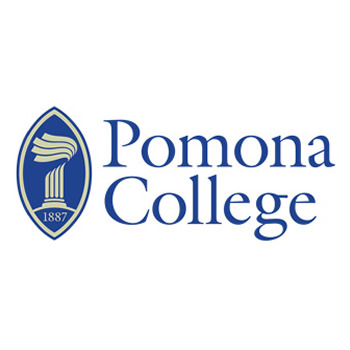

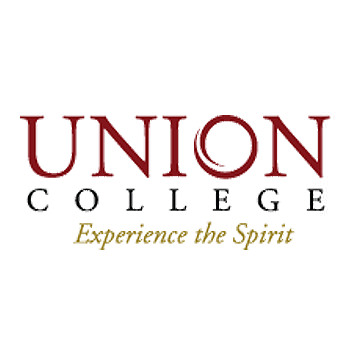

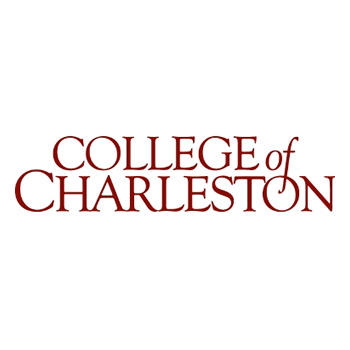
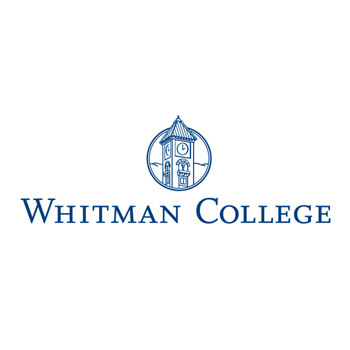
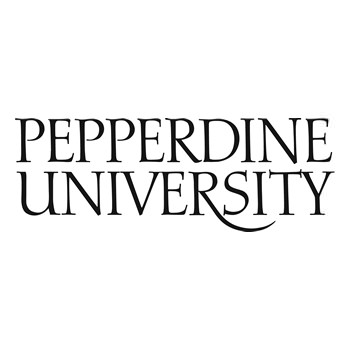
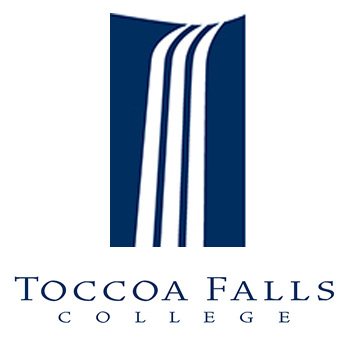










Leave a Reply